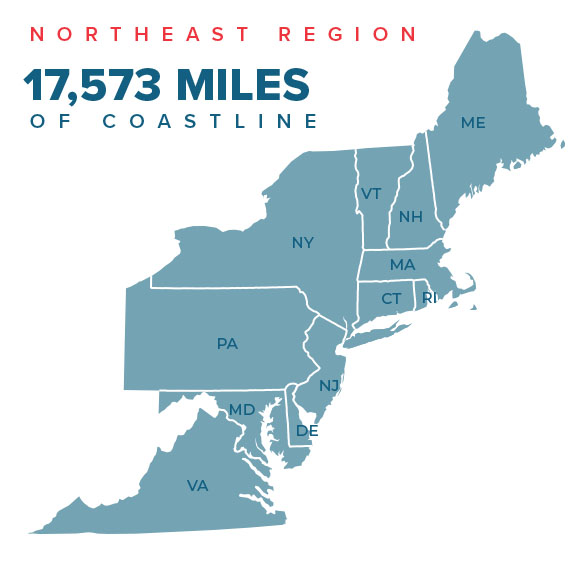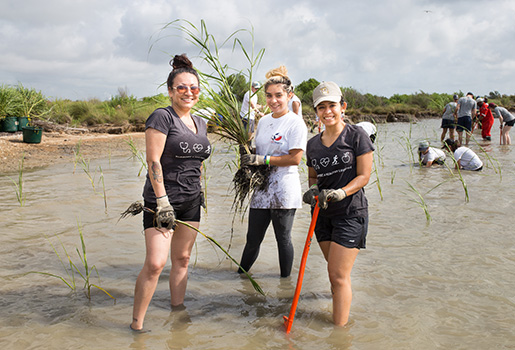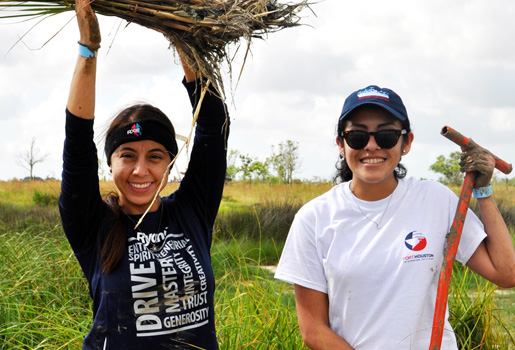Northeast/Mid-Atlantic Project Resources:

The Northeast and Mid-Atlantic region stretches from Maine to Virginia and includes more than 17,570 miles of shoreline. The region is dominated primarily by the mountainous New England Uplands and the low elevation Atlantic Coastal Plain. The landscape in the northern area of the region is dominated by rocky coastlines and deep valleys which resulted from glaciation thousands of years ago. Whereas the landscape along the southern end of the region is much flatter resulting in large swaths of low-lying marsh land and meandering rivers.

The Northeast and Mid-Atlantic region encompasses some of the most densely populated areas of the United States. A massive population and a long history of human development and industry have caused a number of stressors on fish and wildlife habitats. Some of the most profound stressors for wildlife in the region are: habitat loss or fragmentation, increased pollution, reductions in water quantity and quality, overfishing, and climate change.


Why Restore Wildlife and Fish Habitat
Aside from the straightforward reason that restoring habitats will help the critters put in peril by our actions, restoring habitats is beneficial to people. Restoring wildlife and fish habitats help protect our coastlines and coastal towns during storms, protect against the impacts of climate change like flooding or sea level rise, improve water quality and quantity, and improve populations of commercial fish. These benefits offer big returns on investment by reducing property losses and increasing yields from farms and fishing.
Some examples of how restoration that works quickly are marsh restoration and removing dams and blocked culverts. While large dam removal is usually done by large organizations, even removal of small dams on private property can have a huge and beneficial impact.

Restoring fish and wildlife habitat can help stabilize the coastlines and marshes which protect communities from storm surges and flooding from irregular tidal inundation. Healthy restored habitats function better during rain events and can reduce localized flooding. This can also benefit the groundwater supplies which people and industries need and rely upon. Restored habitats help with the overall health of species and the environment, which can result in greater species abundance and increased ecosystem services.

We need your help to improve the Toolkit by completing our easy, 3-minute survey. Your insight is valuable to us.